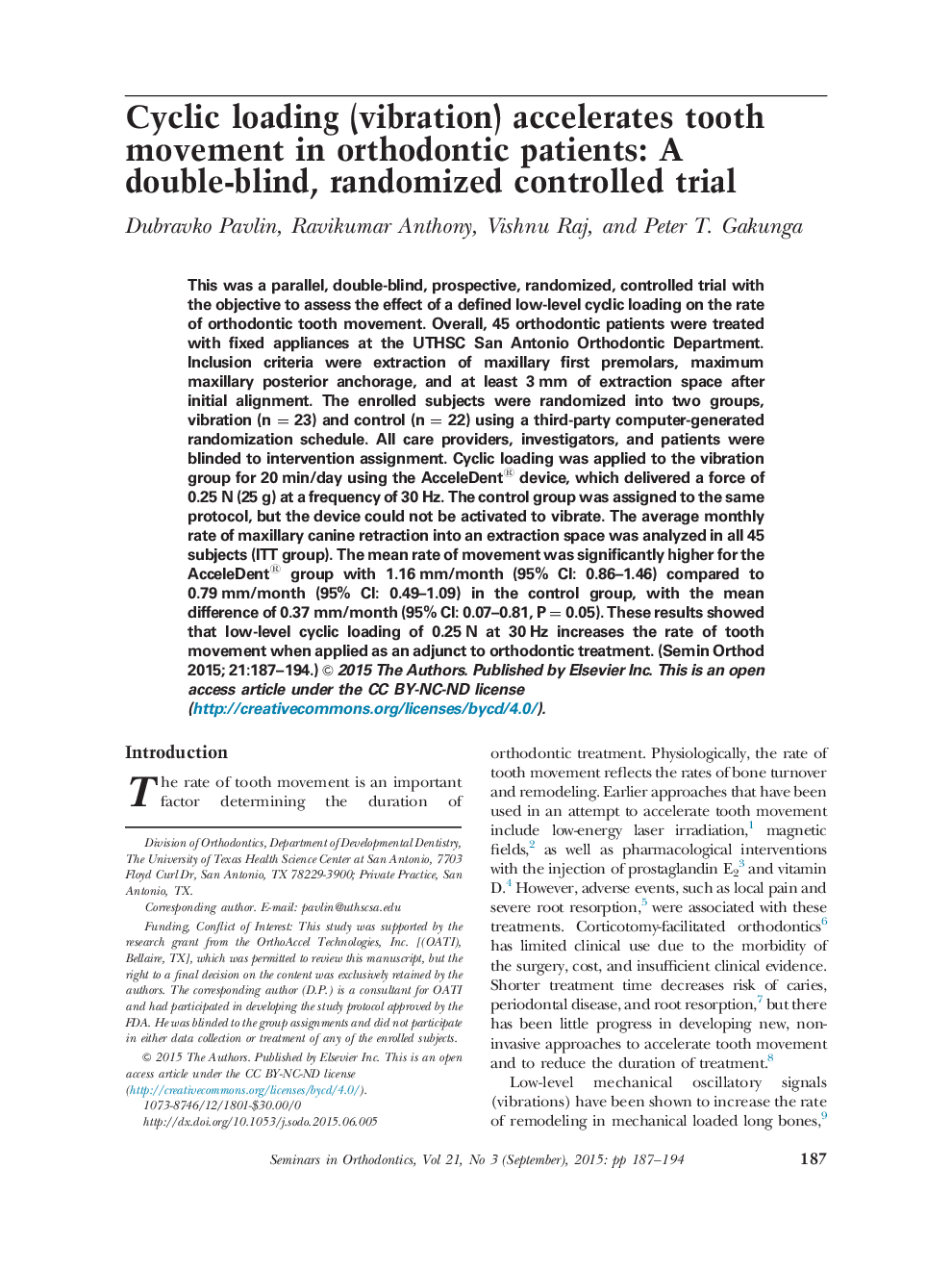| Article ID | Journal | Published Year | Pages | File Type |
|---|---|---|---|---|
| 6060015 | Seminars in Orthodontics | 2015 | 8 Pages |
This was a parallel, double-blind, prospective, randomized, controlled trial with the objective to assess the effect of a defined low-level cyclic loading on the rate of orthodontic tooth movement. Overall, 45 orthodontic patients were treated with fixed appliances at the UTHSC San Antonio Orthodontic Department. Inclusion criteria were extraction of maxillary first premolars, maximum maxillary posterior anchorage, and at least 3Â mm of extraction space after initial alignment. The enrolled subjects were randomized into two groups, vibration (n = 23) and control (n = 22) using a third-party computer-generated randomization schedule. All care providers, investigators, and patients were blinded to intervention assignment. Cyclic loading was applied to the vibration group for 20Â min/day using the AcceleDent® device, which delivered a force of 0.25Â N (25Â g) at a frequency of 30Â Hz. The control group was assigned to the same protocol, but the device could not be activated to vibrate. The average monthly rate of maxillary canine retraction into an extraction space was analyzed in all 45 subjects (ITT group). The mean rate of movement was significantly higher for the AcceleDent® group with 1.16Â mm/month (95% CI: 0.86-1.46) compared to 0.79Â mm/month (95% CI: 0.49-1.09) in the control group, with the mean difference of 0.37Â mm/month (95% CI: 0.07-0.81, P = 0.05). These results showed that low-level cyclic loading of 0.25Â N at 30Â Hz increases the rate of tooth movement when applied as an adjunct to orthodontic treatment.
